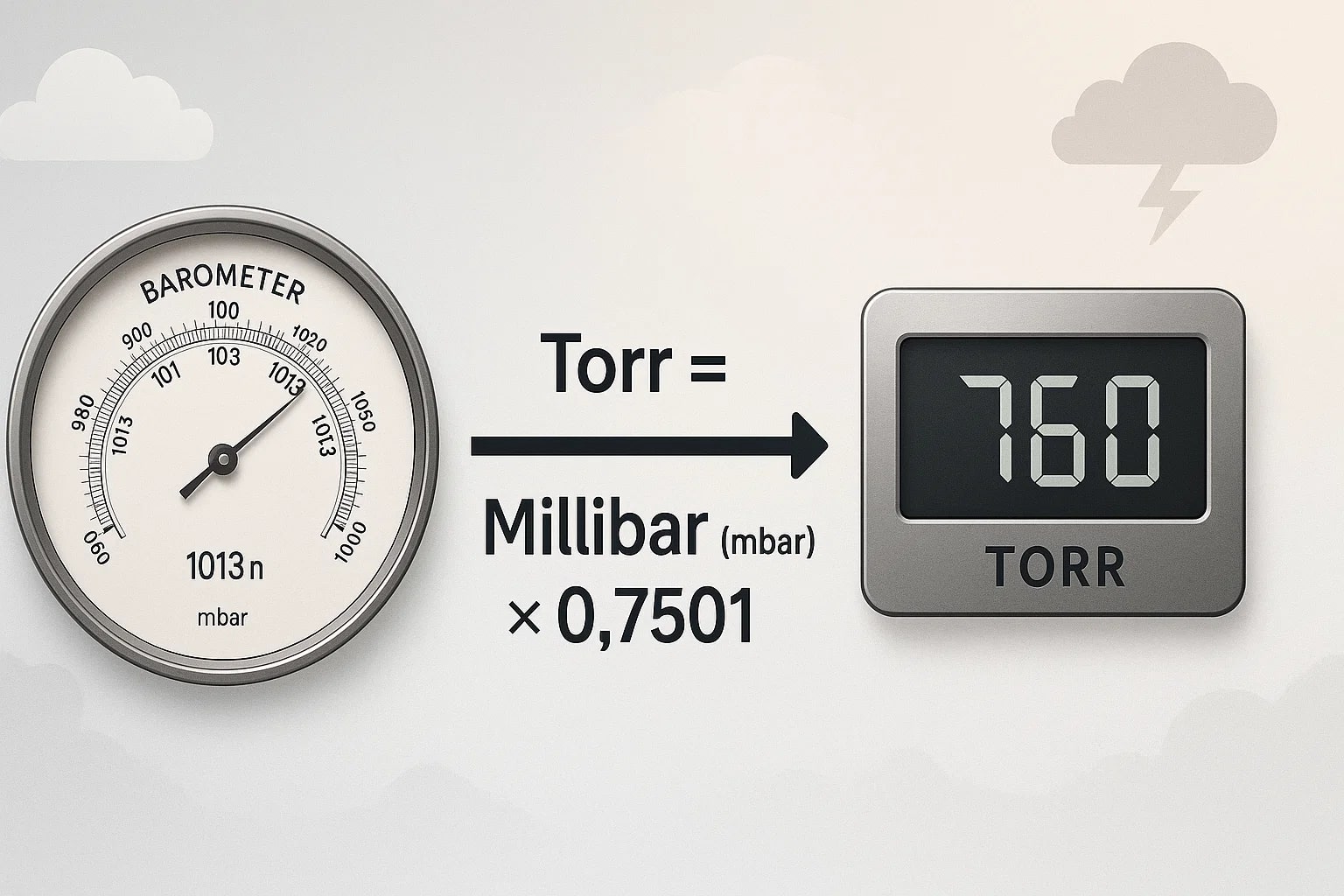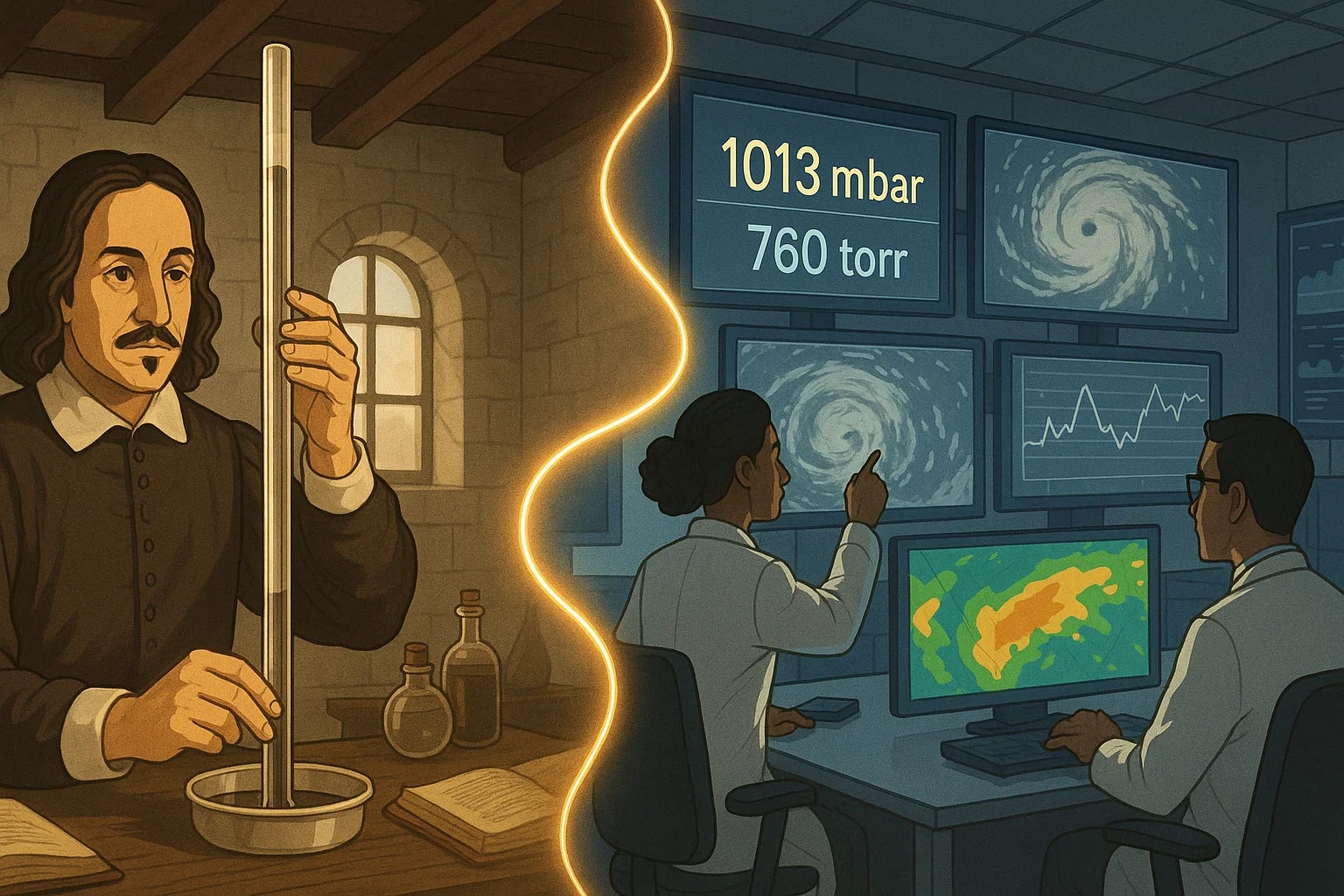millibar to torr – How to convert mbar to Torr
The millibar (mbar) is widely used in meteorology, while the torr is popular in physics, chemistry, and medical research. Converting millibar to torr is essential when comparing weather data with laboratory experiments or clinical readings, ensuring a common understanding across fields.

What is a millibar (mbar)?
A millibar equals 100 pascals. Meteorologists commonly use it to describe atmospheric pressure. Sea-level standard pressure is about 1013 mbar.
What is a torr?
A torr is a unit of pressure named after Evangelista Torricelli, who invented the mercury barometer. One torr equals 133.322 pascals, or 1/760 of an atmosphere. It is widely used in vacuum systems, physics labs, and anesthesia monitoring.
How to convert millibar to torr
Torr = Millibar (mbar) × 0.7501
Example:
Torr = 1013 mbar × 0.7501 = 760 Torr
Need a quick result? The Conversion Tools on Jetcalculator make it easy. You can also try other calculators like the Speed Converter for different unit changes.
Do you know?
-
About millibar: Weather services track storm systems in millibars. A strong low-pressure system can dip below 980 mbar.
-
About torr: In vacuum physics, researchers often work at pressures below 10⁻⁶ torr, conditions far lower than outer space.
From Torricelli’s Barometer to Modern Science
The torr owes its name to Evangelista Torricelli, who invented the mercury barometer in 1643. By showing that air has weight and exerts pressure, Torricelli opened the door to atmospheric science. His work gave birth to both the barometer and the torr unit, which later became essential for vacuum experiments and medical technology.
Fast forward to today: when a weather report lists 1013 mbar, scientists can easily convert it to 760 torr, directly connecting modern meteorology to Torricelli’s 17th-century glass tube experiments.
A Bridge Between Weather and Physics
Converting millibar to torr is straightforward: multiply by 0.7501. Yet this simple equation unites two very different worlds — the forecasts we rely on every day and the precise conditions of physics and medicine. From predicting hurricanes to running high-vacuum experiments, mbar to Torr keeps measurements consistent and meaningful.


